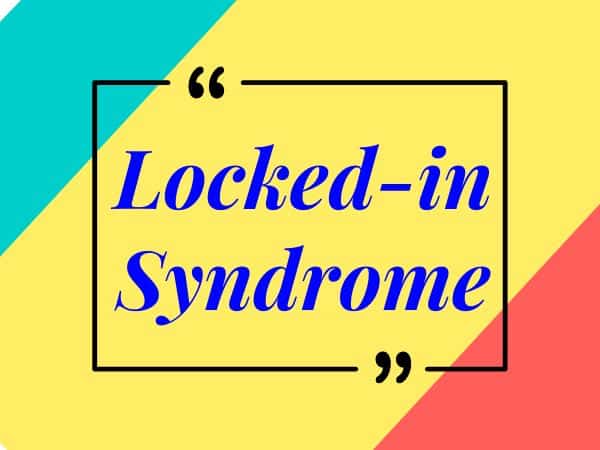What is Locked-in Syndrome and How to Cope with It?
Locked-in syndrome (LIS) is a rare but serious brain condition in which you lose your ability to move and speak. You’re still conscious and, in most cases, can move your eyes and blink. Though there’s no cure for LIS, some people can recover partially or fully with treatment and rehabilitation. In this blog post, we’ll explain what causes LIS, how it’s diagnosed and treated, and what you can do to cope with it.
What causes Locked-in Syndrome?
Locked-in syndrome is caused by damage to a part of your brainstem called the pons. The pons is responsible for relaying signals between your brain and your spinal cord, which controls your voluntary movements and speech. When the pons is damaged, these signals are interrupted and you become paralyzed and mute.
The most common cause of LIS is a stroke that affects the basilar artery, which supplies blood to the pons. Other possible causes include:
- Traumatic brain injury
- Brain tumor
- Infection
- Poisoning
- Medication overdose
- Demyelinating diseases
How is Locked-in Syndrome diagnosed?
Locked-in syndrome can be difficult to diagnose because it can be mistaken for a coma or a vegetative state. However, unlike these conditions, people with LIS are fully aware and alert. They can hear and understand what’s happening around them, but they can’t communicate or respond.
To diagnose LIS, doctors use various tests and methods, such as:
- Neurological examination: Doctors check your eye movements, pupil reactions, reflexes, and responses to pain and sound.
- Electroencephalography (EEG): This test measures your brain activity and shows if you’re conscious or not.
- Magnetic resonance imaging (MRI) or computed tomography (CT) scan: These tests show the extent of the brain damage and the location of the lesion.
- Functional MRI (fMRI) or positron emission tomography (PET) scan: These tests show how your brain responds to stimuli such as images or sounds.
- Eye-tracking device: This device tracks your eye movements and allows you to communicate by selecting letters or words on a screen.
How is Locked-in Syndrome treated?
There’s no specific treatment for locked-in syndrome. The main goals of treatment are to prevent complications, improve your quality of life, and help you regain some function if possible.
Treatment options may include:
- Medications: Depending on the cause of LIS, you may need medications to prevent blood clots, reduce swelling, treat infections, or manage pain.
- Ventilator: If you have trouble breathing, you may need a machine that helps you breathe through a tube inserted into your windpipe.
- Feeding tube: If you can’t swallow, you may need a tube that delivers liquid food directly into your stomach.
- Physical therapy: This therapy helps you maintain your muscle strength and prevent stiffness and contractures.
- Occupational therapy: This therapy helps you learn how to use assistive devices such as eye-tracking devices or speech-generating devices to communicate and perform daily activities.
- Speech therapy: This therapy helps you improve your speech if you have some vocal cord function or use alternative methods of communication such as gestures or eye movements.
- Psychological support: This support helps you cope with the emotional and mental challenges of living with LIS. You may benefit from counseling, support groups, or online communities.
How do cope with Locked-in Syndrome?
Living with locked-in syndrome can be extremely challenging and frustrating. You may feel isolated, depressed, angry, or hopeless. However, there are some things you can do to cope with LIS and improve your quality of life:
- Communicate: Communication is essential for people with LIS. You can use eye movements, blinking, gestures, or assistive devices to express your thoughts and feelings. You can also use social media, email, or video calls to stay in touch with your family and friends.
- Educate: Educate yourself and others about LIS. Learn as much as you can about your condition, treatment options, and available resources. Share your knowledge and experience with others who have LIS or who want to learn more about it.
- Advocate: Advocate for yourself and others with LIS. Speak up for your rights and needs. Join advocacy groups or organizations that promote awareness and research on LIS.
- Participate: Participate in activities that interest you and make you happy. You can enjoy music, movies, books, games, or hobbies. You can also join online communities or forums that share your interests.
- Hope: Hope for the best and don’t give up. Some people with LIS can recover partially or fully with time and rehabilitation. Even if you don’t recover, you can still live a meaningful and fulfilling life with LIS.
Locked-in syndrome is a rare and serious brain condition that causes paralysis and muteness. However, it doesn’t affect your consciousness or cognition. You can still communicate, learn, and enjoy life with LIS. With proper treatment, support, and coping strategies, you can overcome the challenges of LIS and improve your quality of life.
References
(1) Locked-In Syndrome: Causes, Recovery, and Life Expectancy – Healthline.
(2) Locked-in syndrome – Wikipedia.
(3) Locked-in Syndrome (LiS): What It Is, Causes & Symptoms – Cleveland Clinic.
